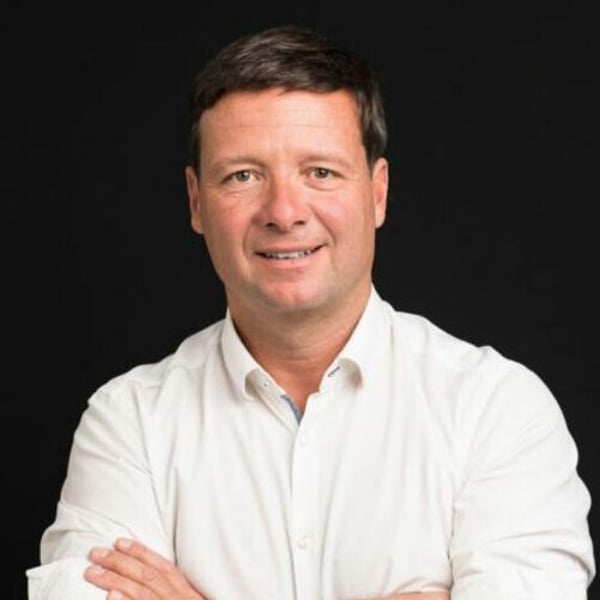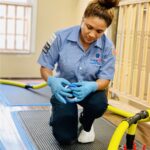
The Lycra Company accelerates on recycled, bio-sourced fibres
Last Updated on January 31, 2024 by Admin
[ad_1]
Translated by
Nicola Mira
Published
Jan 31, 2024
The Lycra Company is going through a sea change. After recently appointing a new CEO, following its exit from the Shandong Ruyi conglomerate, the group that owns the Lycra, Thermolite and Coolmax brands is aiming to transform its product range. It is focusing more on sustainability in developing its latest innovations, as Arnaud Ruffin, the group’s vice-president brands & retail, told FashionNetwork.com.

Last year, The Lycra Company celebrated its 65th anniversary. The group has 3,000 employees and operates six factories in Brazil, Mexico, the USA, Ireland, China and Singapore, and it also produces in Japan via a joint-venture company. A geographical distribution aimed at producing as close as possible to the over 300 brands the group is serving on a regular basis.
The Lycra Company did not disclose its business results, but lingerie, denim and sportswear are reportedly the main sectors in which the group is active. Followed by hosiery (tights and socks), swimwear and, to a lesser extent, ready-to-wear, a sector in which the group operates less frequently. Coolmax, a thermoregulating fibre, and Thermolite, an insulating one, reportedly account for 10-15% of the group’s revenue, which has been impacted by the recent disruption in the apparel market.
“We have been affected by [rising] inflation and by the post- pandemic rush to build up stocks, when brands hastened to create collections that were delivered too late for the season and had to be disposed of a year later,” said Ruffin, adding that “the outlook in 2024 is better than that of 2023, and we’re experiencing less volatility than the fibre market as a whole.”
Bio-sourced fibres’ output share to rise to 30% in 2025
The Lycra Company’s strategy hinges on two main elements. The first is Lycra Adaptiv, a fibre made using a new polymer which behaves differently from traditional Lycra. It reportedly has the same resistance but has better stretch characteristics. “This enables [fabrics] to better adapt to different morphologies, potentially allowing brands to rely on a more limited product range,” said Ruffin. “We really want to replace traditional Lycra with Lycra Adaptiv,” he added.

Lycra Adaptiv was launched in 2023 for the swimwear market, and has recently proved suitable for other segments too, having been also introduced by Adidas. The German sportswear group has adopted it for its All Me line of leggings and bras, made using Adisoft technology.
But The Lycra Company’s main growth driver is set to be bio-sourced Lycra fibre derived from maize. The group is expecting that, by 2025, this bio-sourced material will account for 30% of its output. The fibre does not require manufacturing equipment changes, and it would reduce CO2 emissions by half, helping the group reach its target of cutting its carbon footprint by 25% by 2030.

“This is the only large-scale innovation that exists in the field of elastane,” said Ruffin. “We are no longer talking about isolated solutions, but about a range of products built with sustainability in mind,” he added. Ruffin emphasised that this focus on de-carbonisation is also intended to support clients that have set themselves similar targets for reducing their carbon footprint.
Green options previously ignored
In 2022, The Lycra Company inked a deal with Qore to jointly develop bio-based elastane, but it wasn’t the group’s first attempt at creating greener fibres. In 2014, the group began to market a bio-based fibre with a similar positioning. But it did not find an audience, said Ruffin, who thinks that now conditions are more favourable for a move in this direction.
“We are emerging from a period of uncertainty that made deploying innovative projects more difficult,” he said, adding that “brands have reduced their risk and are focusing on more basic products. But we’re once again feeling that some of them are keen to differentiate themselves and develop new narratives, meaning we need to adapt our range to these expectations.”

Ruffin thinks that, following the ownership change, the group has a better opportunity to significantly transform its product range. “Compared to our original American shareholders, who were very much geared towards fossil fuels, the change of owner (following The Lycra Company’s exit from the Invista group) enabled us to re-allocate resources and put more effort into growing the business sustainably,” said Ruffin.
Bio-sourced fibres as standard, more recycling
Having for a long time been synonymous with synthetic fibres, The Lycra Company doesn’t want to consider a separate bio-sourced range. Instead, the group wants to make bio-sourced fibres its standard. A transition that will begin on a segment-by-segment basis from the end of 2024, after a test phase that is now nearing its end.
Recycling-wise, the group is relying notably on Lycra T400, an elastomultiester polyester fibre ideal for products that require elasticity without resorting to elastane, such as jeans. “We have managed to demonstrate on a small scale we can make stretch fabrics that can be recycled via conventional polyester recycling processes,” said Ruffin.

Decathlon’s Negombo and Nabaiji swimsuits are made using the Lycra T400 recycled fibre
A notable breakthrough, which the group has advertised with French sports apparel and equipment group Decathlon, whose Negombo and Nabaiji swimsuit lines use Lycra T400. The latest version of Lycra T400, the Fit400 fibre, can instead be used to produce sport t-shirts, shorts, polos and trousers with the same recycling potential.
The group is attempting to make even traditional Lycra fibres more recyclable, as it has recently become possible to separate polyester and polyamide, recreating a yarn with identical properties. “We are truly entering the circular economy loop, even if not immediately on an industrial scale,” concluded Ruffin.
Copyright © 2024 FashionNetwork.com All rights reserved.
[ad_2]
Source link




